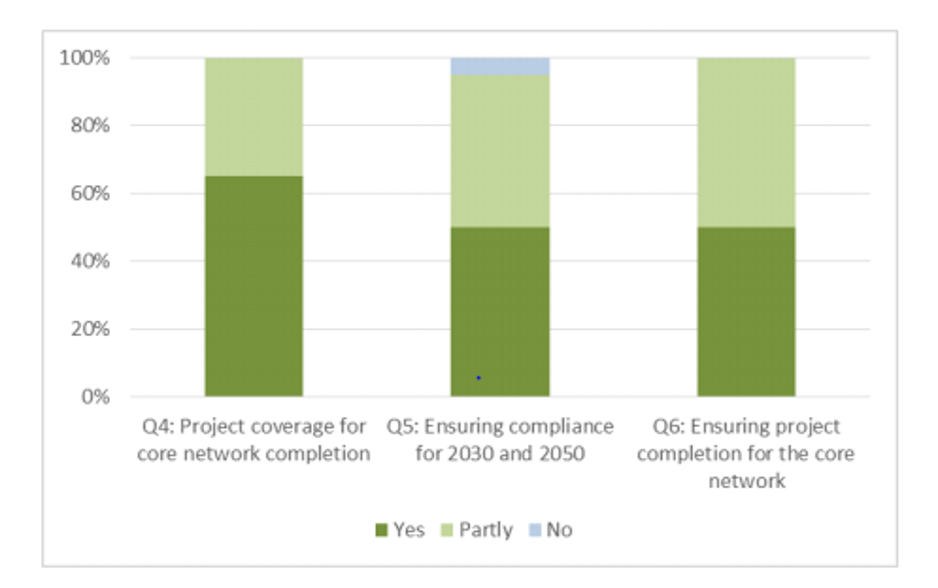TEN-T Road Network completion status and compliance with Members’ state plans
The Trans-European Transport Network (TEN-T) policy addresses the implementation and development of a Europe-wide network of railway lines, roads, inland waterways, maritime shipping routes, ports, airports and railroad terminals. The implementation of the objectives and standards set in the guidelines for the development of the trans-European transport network (Regulation (EU) No 1315/2013, hereafter TEN-T Regulation) of 2013 is essential for a more sustainable, seamless and smarter European transport network. The objective is improved use of infrastructure, reduced environmental impact of transport, enhanced energy efficiency and increased safety. Following a few figures on the state of art of the TEN-T Road Network and few figures on how coherent and aligned the national plans of members states are towards TEN-T implementation (from a study recently released by European Commission).
Source: EC
10.1 TEN-T Road Core Network Corridors 2019
Source: CEDR, october 2020
Notes: Dashed lines indicate Core Network Sections where no data was provided for the 2019 Report
10.2 Distribution of Road Types on the TEN-T network
Source: CEDR october 2020
10.3 Distribution of Road Types on the TEN-T network by country
Source: EC
10.4 Compatibility scoring of Member States’ plans and programmes with TEN-T approach
Source: EC
10.5 Answers to the questions related to the delay of completing projects on the core network
Source: EC
10.6 Answers to questions related to the compliance requirements of the TEN-T network
Source: EC






